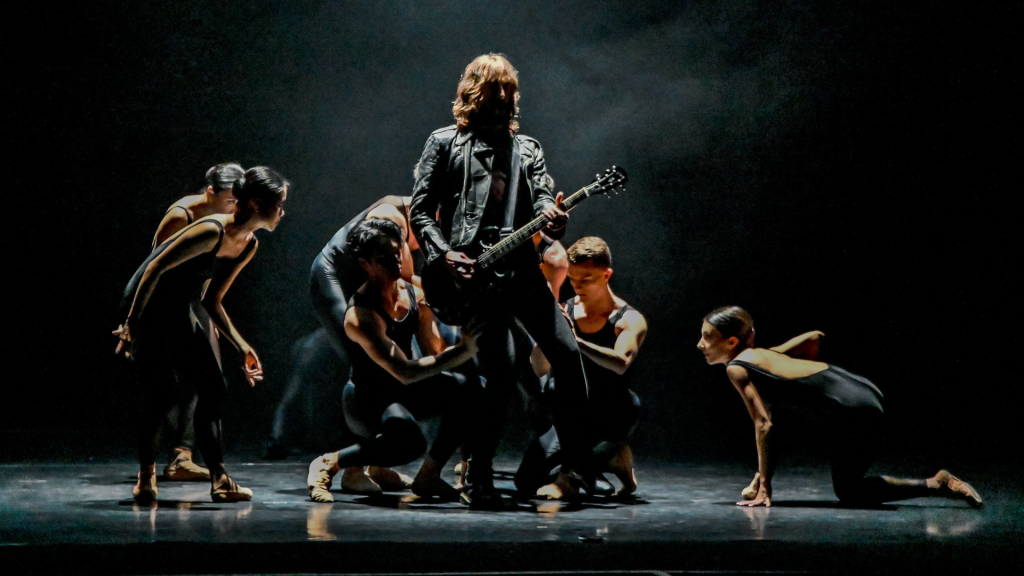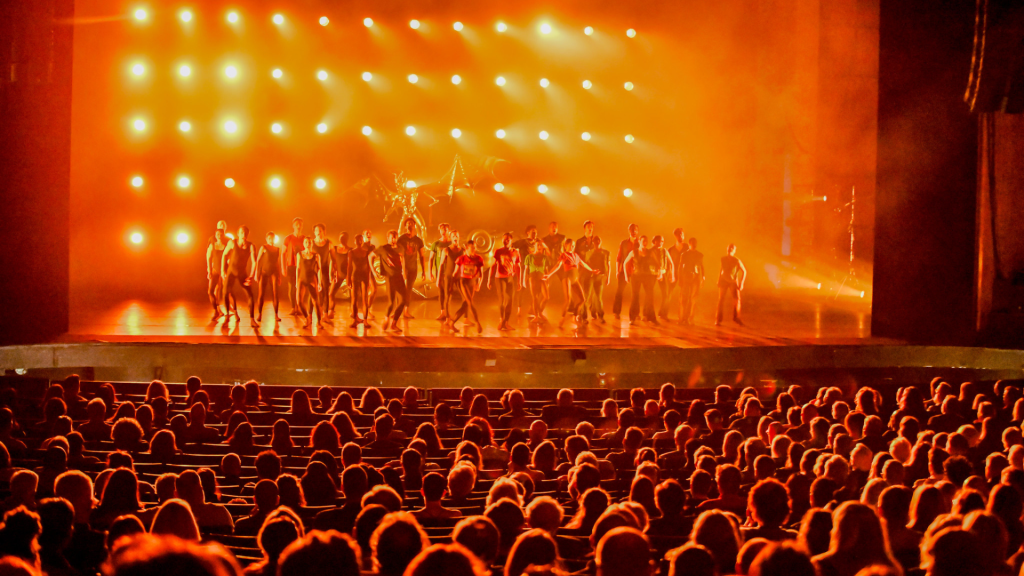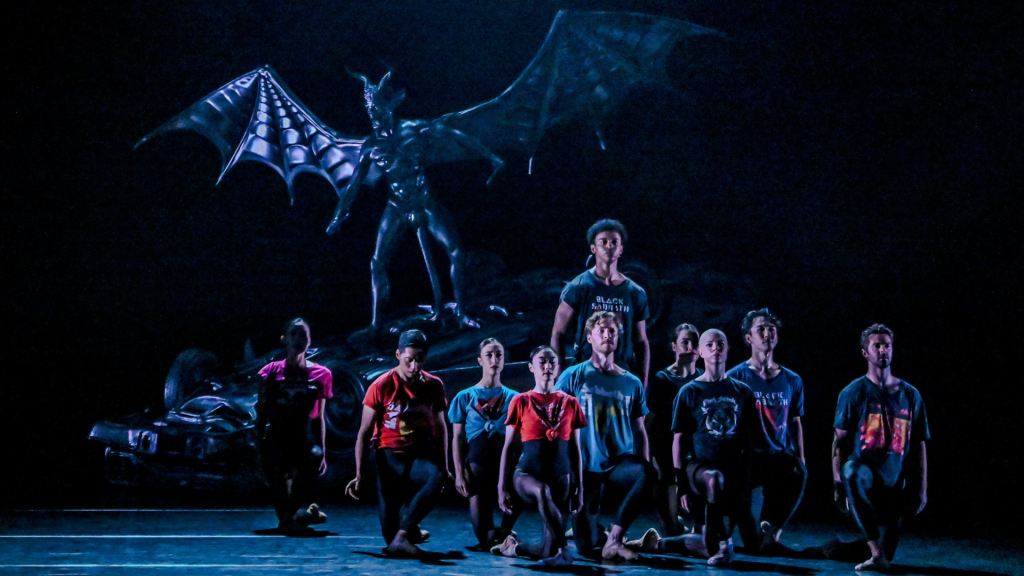
Birmingham Royal Ballet’s production of ‘Black Sabbath – The Ballet’ has taken centre stage at The Lowry, Salford, serving as a touching tribute to the band’s legacy through the unexpected but seamless merging of heavy metal music and ballet.
Carlos Acosta’s creative and effective direction frames the ballet into three separate acts: one focusing on Heavy Metal Ballet, the others focusing on the band and their legacy.
The reverberating sound at the top of the show helps to build tension, holding the audience in suspense as the dancers start to emerge from the back of the stage. This is accompanied by the voice of Ozzy Osbourne that pierces through the speakers in the auditorium, singing the first few lines of War Pigs.
The arrival of the guitarist on stage marks a crucial moment in the ballet, acting as a kind of higher power. The guitarist lifts the darkness on stage, bringing light, hope and feeling into the ballet dancers, causing them to become intoxicated by the sound of the guitarist as he almost represents the band’s unique sound that people constantly kept coming back to.
What follows this is perhaps one of my favourite moments in the entire show, the kiss pas de deux, where two dancers are locked in an eternal kiss. This is performed with such grace and elegance and allows you to appreciate the intricacy of Raúl Reinoso’s choreography and the talent of the two dancers on stage. This results in this delicate performance that feels effortless, creating a beautiful moment on stage which, in turn, helps to reference the band’s unexpected softer and more melodic side.

The guitarist returns to close the first act, lifting the darkness again and merging the themes explored into the feeling of a festival setting. This allows the dancers to, once again, become intoxicated in the music of Black Sabbath, causing them to revel in the joy that the music brings to not just them but the entire auditorium, creating a poignant and beautiful moment for the end of Act 1, as it ends on a sense of community between the stage and audience.
Act 2 starts with the dancers coming out onto the stage in ordinary clothing. This proved to be effective in helping to give the piece a visual image and represent not just the band itself but also the modern younger generation. On top of this, memoirs from band members play over the speakers, helping to provide insight into the early days of the band and their own individual lives.
Tony’s memoir touches upon his experiences in the metal factory industry, which is beautifully brought to life on stage by a solo male dancer, walking along the factory line whilst responding to the rhythms in Tony’s voice. This allowed for a dynamic moment to be created on stage, which carried on seamlessly into the next sequence that explored Ozzy’s mental state, performed so beautifully through a solo from a female dancer, where you could really get a sense of Ozzy’s inner psyche.
Throughout this act, Sun Keting and Christopher Austin’s orchestral arrangements build steadily, culminating in an explosive ending sequence which evokes a sense of growing freedom. As well as this, Cassi Abranches’s choreography helps to foreshadow this growing sense of community brought together by the music of Black Sabbath, therefore linking to the final act.
The final act centres on the impact of the band’s legacy and this growing sense of community and found family. As the curtain rises to reveal that the blacks are exposed, the audience is left with an immediate sense of wow factor, allowing for a deeper connection with the music and performances being presented on stage. Additionally, the various themes from the three acts begin to merge as one, culminating in a jaw-dropping spectacle of an ending where the legacy of the band takes centre stage and resonates with creative generations to come.

For me, at moments during the performance, the pace felt a little bit slower, as it was sometimes hard to stay engaged. However, with the inclusion of duets, solos and the guitarist, I was immediately drawn back into the action presented on stage as I shared the same feeling as the dancers, as they were becoming intoxicated by the sound of the guitar, which brought a new, disruptive sense of life to the ballet, which added clever elements of variation.
I left that theatre with this newfound sense of appreciation for what ballet can achieve and was utterly transfixed the entire time on that stage and the precision and technique of these dancers. This was certainly a unique, bold and powerful production that paid great tribute to Black Sabbath, told through this creative and astonishing lens.
★★★★☆















Recent Comments